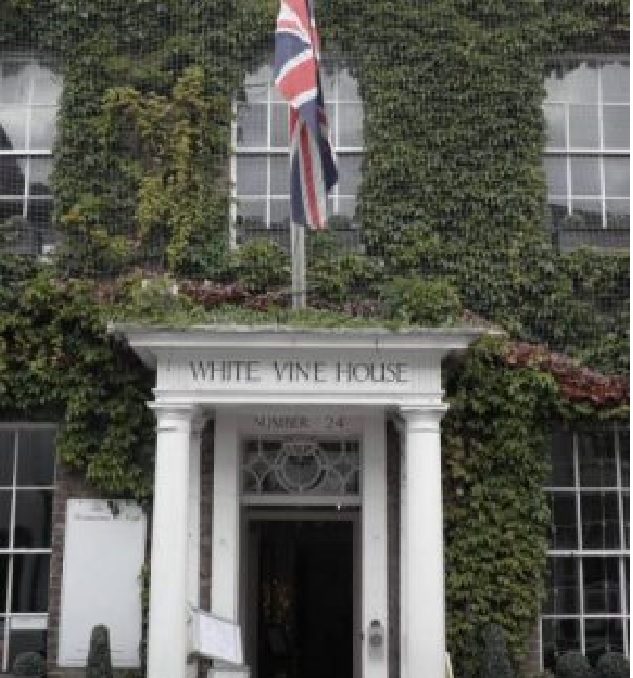New owners have recently arrived at the White Vine Hotel in the High Street and they want to strip the ivy from the front elevation, which would significantly change the look of this part of the street. The Town Council are concerned about this. The specialist surgeon dealing with it is anxious to ensure that there is no objection to the operation and is therefore approaching the planning authorities before going ahead.
The Government have described ivy as a good insulator, but it can also be a pernicious weed. By digging its roots into both bricks and mortar, it can do considerable damage and incur significant costs in repairs. It is not impossible that a purchaser’s survey may have revealed potential problems of this nature here.
There are, of course, a few buildings, mainly in the big cities, which are quite literally green and have ‘vertical gardens’ covering one or more of their elevations. These are, however on specially designed and prepared surfaces and consist of ‘planting’ – other than ivy –suitable for the purpose.
Photo: Rye News library




It is not only Ivy growing on White Vine, but Virginia Creeper too. It Is fast-growing and invasive, constantly invading my property next door, degrading brick and paintwork. In recent years the previous owner has done nothing to trim it back, despite my pleas. So I have employed a contractor at considerable expense. However he could not reach to the roofline where it continues to grow happily!
In the past the frontage of White Vine was bare brick and I shall be very relieved to see it returned to that state.
As far as we have been informed the council are very happy that the invasive ivy is going to be removed giving the vine a chance to come back to its former glory. Perhaps the full facts are needed before making publishing.
Can only be improved by removing the general mess of foliage. It is a beautiful building, much neglected and needs to see the light of day.
It is well established that allowing ivy to grow up to the gutter line and beyond is detrimental to the fabric of the building.
So, removing it at this level should be a matter of regular maintenance.
The hotel in our village in Durham/North Yorkshire has gone through several cycles of being covered in ivy and not so. But I think it looks better with a controlled amount of ivy/creeper.
As one of the main features of the High Street, it deserves much careful consideration.
The plight of your correspondent is noted but he is quite entitled to remove any invading his property.
The other matter to consider is the state of the brickwork. Will that be as pleasing to look at if the ivy is removed.
Oh, as an addition to my previous comment, I’d also remove the flag and replace it with something more welcoming to European visitors …
No one has mentioned the very unsightly anti-pigeon netting that covers the entire building, and is an eye-sore. It was put up, the owners told me, because the creeper covered facade was used for nest sites by the town’s numerous feral pigeons. Oddly enough, our common attitudes to ivy on buildings are not shared in Sweden, where the equivalent of English Heritage apparently encourages ivy on ancient monuments for a very good reason. It protects against rainwater soaking of the brick and stonework and subsequent disintegration of the structure following frosts. At the seminar where I was told of this we were also told that frequent cutting of ivy makes it more aggressive to the walls, though my experience is that damage to walls is negligible unless the walls are already unsound, what does cause really severe problems is ivy getting under tiles and gutters and into eaves. Maintenance of ivy is easy enough, if people are prepared to do it, but access can be very difficult on tall buildings. Ivy is highly beneficial to wildlife, bees and small birds included, as it provides copious nectar and fruit at a time of year when there is little around, so as a garden wall covering it is very valuable.
Ivy is more destructive than creeper which clings without penetrating the mortar. As has been pointed out, the damage that may be caused by ivy might be offset by the weather protection it provides. There are examples in Rye of removal that has led to significant damage. Loosened mortar has been replaced in cement rather than lime mortar leading to aggravated brick decay (lime mortar should always be used in old brickwork). At present it is difficult to ascertain how sound the underlying surface is. The aesthetic of the ivy/creeper covering must also be considered; clearance may make the High Street look rather stark. Well-trimmed it should be no problem to neighbours.
It will be interesting to learn what the planning department and Conservation Officer think. The White Vine (Holloway House) is Grade 2 listed.
Hi, I am James Brooks the tree surgeon dealing with the Ivy on this building.
On close inspection of the Ivy and Vine growing up the front of this hotel it is clear it has been very poorly managed and left to get out of hand.
The Ivy is being held up by a down pipe which is putting a lot of weight on it, this could potentially pull it of the face of the building in high winds for example causing a lot of damage.
We will be removing the Ivy but coppicing the Vine and will manage it over the next year ensuring the building doesn’t loose any of its charm.